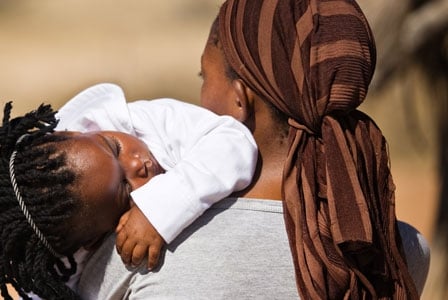
Between 1990 and 2010, the number of deaths of young children fell from 12 million to 7.6 million, but nearly 30 children still die every two minutes.
“Every two minutes, somewhere in the world, a woman dies from complications of pregnancy and her newborn baby’s chances of survival are very poor. For every woman who dies, an additional 20 to 30 suffer significant and sometimes lifelong problems as a result of their pregnancy … In these same two minutes nearly 30 young children die of disease and illness that could have been prevented or effectively treated.” This is according to the press release of a new report, Building a Future for Women and Children, published by the Countdown to 2015 Initiative.
The report outlines progress made on maternal, newborn, and child health in the 75 highest-burden countries, mostly in Sub-Saharan Africa and South Asia, where more than 95 percent of all maternal and child deaths occur.
Positive development
Believe it or not, these statistics are an improvement on data collected 20 years ago. Annual maternal deaths since 1990 have declined by almost 50 percent and deaths for young children fell from 12 million to 7.6 million.
In some of the world’s poorest countries, infant death rates have been dropping twice as fast compared to the 1990s. This has been the case in Botswana, Egypt, Liberia, Madagascar, Malawi, Rwanda, and the United Republic of Tanzania, where the rate of decline between 2000 and 2010 was 5 percent or more.
Maternal death rates have also dropped by 75 percent in Equatorial Guinea, Nepal, and Vietnam.
Still a great need for improvement
Improvements in maternal and child health are specific to only a selection of countries. Of the 75 countries looked at, 25 have made insufficient or no progress in reducing maternal deaths and 13 have made no progress in reducing the number of child deaths.
Mickey Chopra, chief health officer of United Nation’s Children\’s Fund (UNICEF) and co-chair of the Countdown to 2015 initiative, says, “Global efforts to save the lives of women, newborn babies, and young children are not moving fast enough.”
Many of the improvements in death rates have been attributed to an 80 percent increase in vaccination coverage and improved distribution of bed nets to prevent malaria. However, diarrhea and pneumonia still account for more than two million preventable deaths.
Make a difference
In the developed world many of our consumer practices can affect the lives of people living in developing countries. Profits from products that are fair trade certified go directly to helping producers and their communities to improve their quality of life, which often includes access to medical care. Many certified organic products also ensure better and safer working conditions for farmers and can improve the sustainability of farming projects.
Looking to get more involved? Look into these socially conscious endeavors for improving the lives of others around the world:
- voluntouring: vacation with a conscience
- volunteer time with socially conscious non-profit organizations
- be inspired by others


